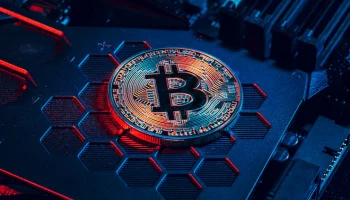As the world continues to embrace digitalization, there is a growing need for the digitization of assets. One of the ways to achieve this is through tokenization. Tokenization is the process of converting the value of an asset into a digital token that can be traded on a blockchain.
This allows for fractional ownership of the asset and increased liquidity. In this ultimate guide, we will explore what tokenization is, how it works, and its benefits. If you are starting on crypto trading, try bitcoin buyer an amazing online trading platform for a seamless trading experience.
What Is Tokenization?
Tokenization is the process of converting the value of an asset into a digital token. The digital token is then recorded on a blockchain, which acts as a decentralized ledger. This allows for the asset to be fractionalized, meaning that ownership of the asset can be divided into smaller portions.
These portions can then be bought and sold, just like traditional securities. The sensitive data must be stored at a centralized destination securely to encourage subsequent reference. Moreover, it needs staunch protection around it. The tokenization approach has a security that is based on the security of sensitive algorithms and values.
How Does Tokenization Work?
Tokenization begins with the identification of an asset that can be tokenized. This can be anything from real estate to artwork. Once the asset has been identified, it is appraised, and its value is determined. The value is then divided into smaller portions, which are represented by digital tokens.
These tokens are then sold to investors who can trade them on a blockchain. Tokenization is an alternative to sensitive data having equivalent nonconfidential information. This replacement yet non-sensitive data is known as a token. With the use of a mathematically reversible cryptographic operation, you might create a token.
Key Tokenization Purposes
The primary purpose of tokenization is to safeguard sensitive data while saving business utility as well. This is different from encryption because, in the latter, the confidential information is stored and modified with other methods. These methods don’t allow their consistent use for entrepreneurial purposes.
Finally, the aim of an effective tokenization platform is to eliminate real-time personal information from your business systems. They are also responsible for replacing data set with indecipherable token and keeping them stored in a secure cloud setting. The key here is usable data. Tokenization is different from a security system that prevents hackers from entering your network systems.
Benefits Of Tokenization

There are several benefits to tokenization.
Boosts Your Current Liquidity
First, it increases liquidity. Fractional ownership of assets means that more people can invest in them. This leads to a larger pool of potential investors, which increases liquidity. Second, it reduces transaction costs. Traditional asset transactions can be expensive and time-consuming.
Cost-Effective
Tokenization eliminates the need for intermediaries, reducing costs and increasing efficiency. Third, it increases transparency. The blockchain acts as a decentralized ledger, which means that all transactions are recorded and can be viewed by anyone. This increases transparency and reduces the risk of fraud.
Enhanced Efficiency
Leveraging blockchain technology eliminates the urgency for legacy middlemen, which leads to a lower settlement cost and time. Thus, you are left with a lot in your pocket for your insurance, along with other procedures.
Introduction Of New Opportunities
One of the staunch token use is in the private markets, which is considered inefficient and opaque. They are developing and have grown into a larger number as various investors stress private assets. Factors such as high investments, relative illiquidity, and long lockups are mainly responsible.
Streamlined Process Of Payment
When investments offer periodic interest payments, tokenization perks are further analyzed. Conventionally, investors receive dividend payments or coupons right after their third-party providers.
Considerations For Enterprises Willing To Tokenize
Enterprise-level arguments stating the value of tokenization are taking place already. There are some basic considerations that should be included in this debate:
-
Reconsider Your Brand’s Objectives
It doesn’t matter whether your company wants to make new consumer acquisitions or boost cost savings; tokenization is the best way to achieve these goals at a time.
-
Know About The Token Standards Difference
Secondly, one has to learn now every single decision might have an impact on your business objectives. These standards are different when applied to blockchains which usually makes adoption easier.
-
Comprehend Regulatory Constraints And Needs
Understanding regulatory constraints is important, just like compliance and regulation, and most of them vary in different jurisdictions.
-
Select A Platform That Depends On Previous Considerations
Keep in mind that tokenization needs a substantial infrastructure, and it is best to collaborate with a dedicated service provider. Furthermore, he/she must be able to issue tokens, help you protect your assets, and, most importantly, execute transactions.
Tokenization And Regulation
Tokenization is still a relatively new concept, and there is currently a lack of regulatory clarity. However, several countries are working to create regulations to govern tokenization. The United States, for example, has created the Token Taxonomy Act, which seeks to define digital tokens and exempt them from securities laws.
Apart from increasing both accessibility and liquidity, tokenization can do so much more. It also helps in developing modern economic opportunities and models to monetize previous assets. Most significantly, it drives financial inclusion. For instance, tokenization will help in creating partial ownership of high-valuing assets.
Conclusion
Tokenization is a revolutionary concept that has the potential to change the way we invest in assets. It increases liquidity, reduces transaction costs, and increases transparency. However, there is still a lack of regulatory clarity around tokenization, which could hinder its adoption. As the world continues to embrace digitalization, tokenization is likely to become more prevalent.
In summary, tokenization is the future of asset ownership, and it is important for investors to understand its potential benefits. By embracing tokenization, investors can increase their access to investment opportunities, reduce transaction costs, and increase transparency. If you’re interested in learning more about tokenization, consult a qualified financial advisor.
Additional:




























